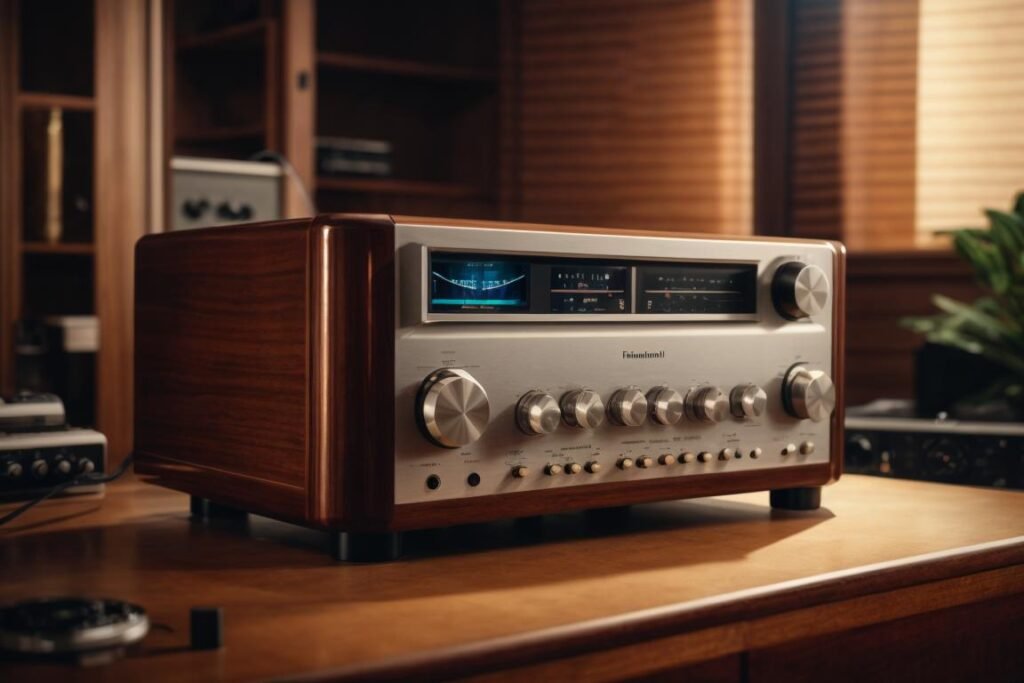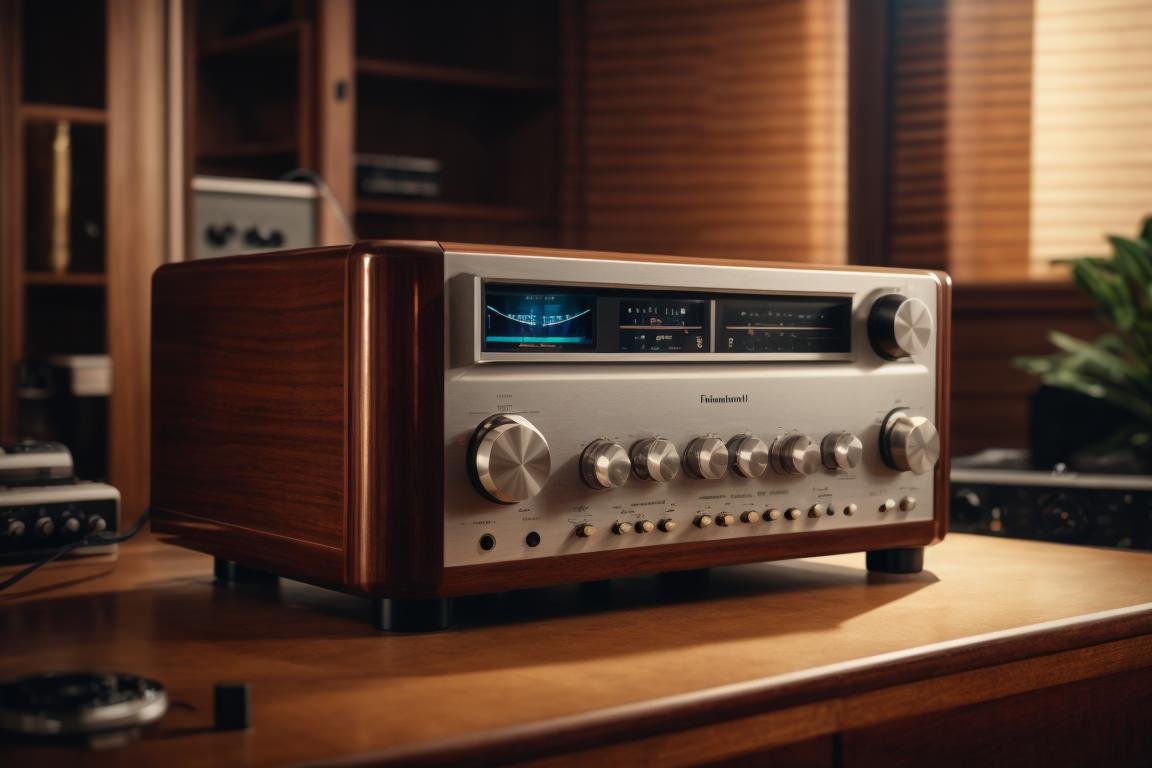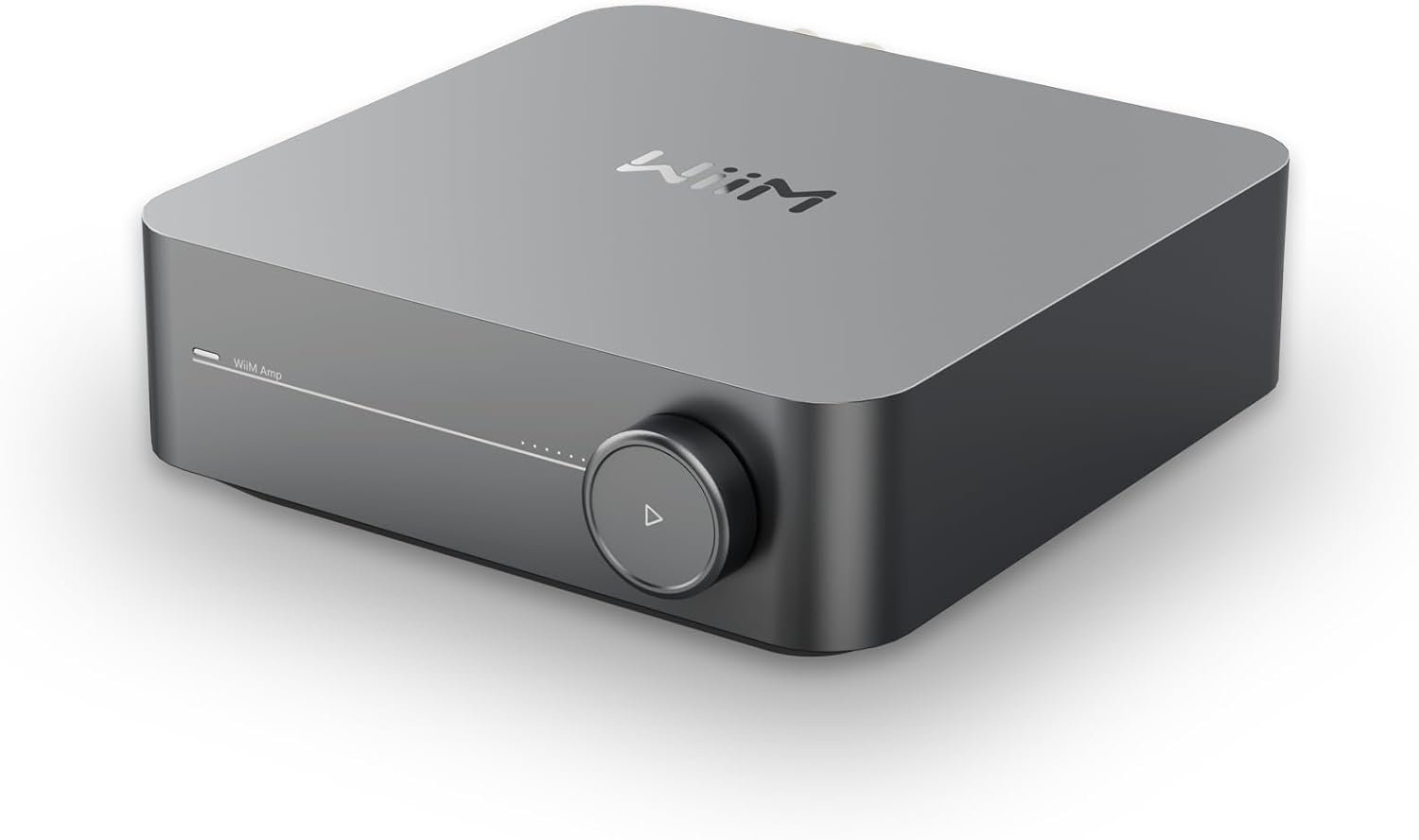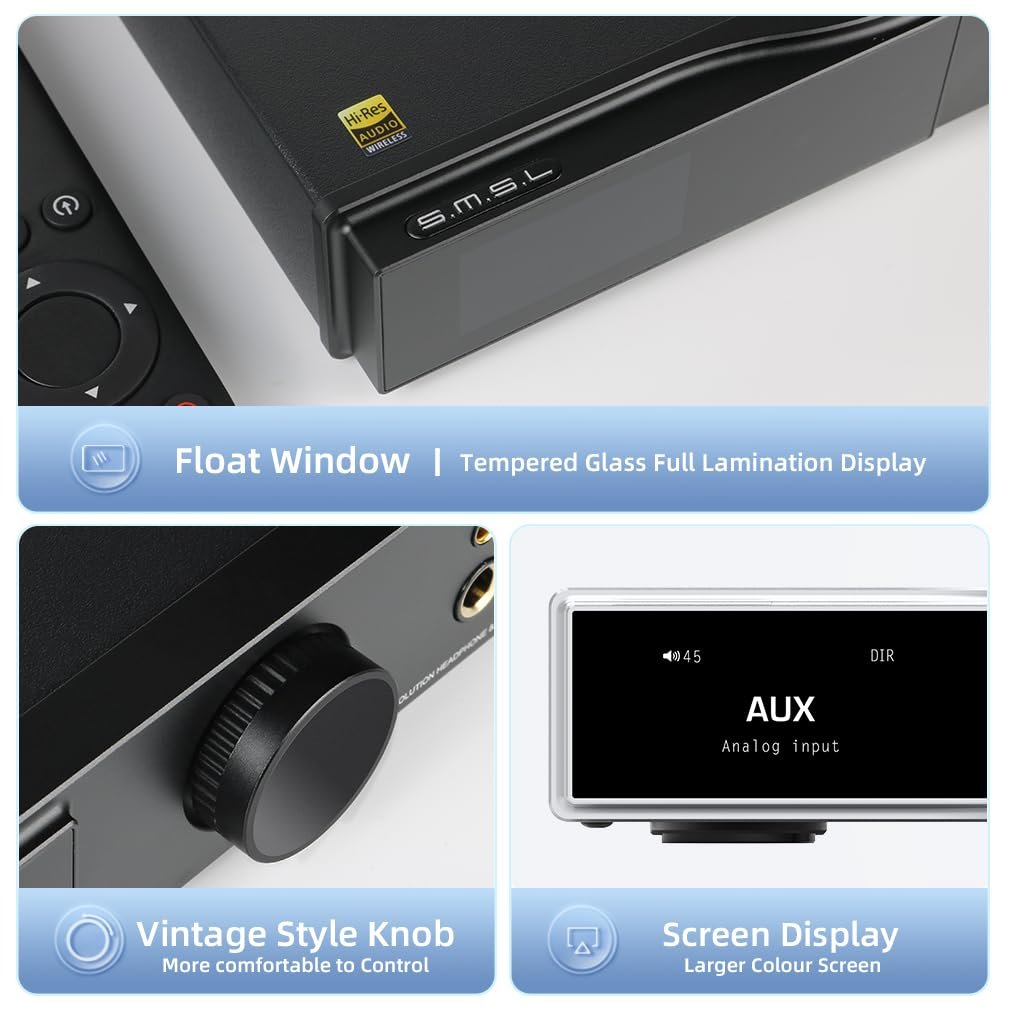Are you curious about whether your audiophile-grade headphones require a dedicated headphone amplifier? You’re not alone! In this article, we’ll explore the topic and provide you with all the information you need to make an informed decision.
If you’re unsure whether investing in a headphone amplifier is necessary for your audiophile headphones, we’ve got you covered. We’ll delve into audiophile headphones and discuss the benefits and drawbacks of a dedicated headphone amplifier. So, if you want to enhance your listening experience and know if a dedicated amplifier is a worthwhile addition, keep reading!

What are audiophile-grade headphones?
Definition of audiophile headphones
Audiophile headphones are high-quality headphones designed explicitly for audiophiles’ discerning ears. Audiophiles have a keen passion for high-fidelity sound reproduction and constantly search for the most accurate and immersive listening experience.
Audiophile headphones offer superior sound quality compared to regular headphones due to their use of premium materials, advanced driver technology, and meticulous engineering. These headphones are often designed to reproduce audio in a way that is faithful to the original recording, capturing every subtle detail and nuance.
Features of audiophile headphones
Audiophile headphones come with various features that contribute to their exceptional sound quality. Some of the key features include:
- Audiophile headphones are equipped with high-quality drivers capable of reproducing a broad frequency range, resulting in a more detailed and accurate sound reproduction.
- Open or closed-back design: Audiophile headphones are available in open-back and closed-format settings. Open-back headphones provide a more spacious and natural soundstage, while closed-back headphones offer better noise isolation.
- Premium materials: Audiophile headphones often use premium materials such as high-grade metals, genuine leather, and luxury finishes. These materials enhance the headphones’ durability and contribute to a more luxurious and comfortable listening experience.
- Detachable cables: Many audiophile headphones come with detachable cables, allowing for easy cable replacement or customization. This feature can be handy for those who prefer specific cable types or lengths.
- Comfortable fit: Audiophile headphones are designed with comfort in mind. They feature plush cushioning and adjustable headbands to ensure a comfortable and secure fit, even during extended listening sessions.
What is a dedicated headphone amplifier?
Explanation of a dedicated headphone amplifier
A dedicated headphone amplifier is a separate audio component designed to drive headphones. An external device connects your audio source, such as a music player or computer, and your headphones.
While many audio devices, such as smartphones and computers, have built-in headphone amplifiers, these amplifiers are often not optimized for driving high-impedance or power-hungry audiophile headphones. On the other hand, a dedicated headphone amplifier is engineered to deliver clean, distortion-free power to your headphones, allowing them to perform at their best.
Purpose of a dedicated headphone amplifier
The primary purpose of a dedicated headphone amplifier is to provide sufficient power and voltage swings to drive audiophile headphones. High-impedance headphones, in particular, require more power to deliver their full audio potential.
A dedicated headphone amplifier also helps to improve the overall audio quality by reducing distortion, improving dynamics, and enhancing the signal-to-noise ratio. It is a reliable power source for your headphones, ensuring they receive a clean and consistent audio signal.
Benefits of using a dedicated headphone amplifier
Enhanced audio quality
One of the main benefits of using a dedicated headphone amplifier is the significant improvement in audio quality. The amplifier helps to bring out the true potential of your audiophile headphones by providing them with ample power and voltage.
With a dedicated headphone amplifier, you can expect a more spacious and detailed soundstage, improved instrument separation, and enhanced dynamics. The amplifier allows for better control and accuracy in reproducing the nuances and subtleties of the music, resulting in a more engaging and immersive listening experience.
Improved power output
Most dedicated headphone amplifiers are specifically designed to deliver higher power output compared to the headphone amplifier built into audio devices. This increased power output allows better control over the headphones’ drivers, resulting in improved bass reproduction, better transient response, and tighter sound.
A dedicated headphone amplifier ensures that your headphones are driven with sufficient power, even at higher volume levels. This eliminates distortion and ensures that the audio remains clean and undistorted, regardless of the complexity or volume of the music.
Reduced distortion
A dedicated headphone amplifier typically has a lower total harmonic distortion (THD) than audio devices’ headphone output. THD represents the distortion in an audio signal, and a lower THD value indicates less distortion.
Reduced distortion means that the audio signal remains faithful to the original recording without any added artifacts or coloration. This lets you hear the music as intended, with clarity, accuracy, and precision.
Factors to consider when deciding if a dedicated headphone amplifier is necessary
Impedance and sensitivity of the headphones
The impedance and sensitivity of your headphones are the key factors to consider when determining if a dedicated headphone amplifier is necessary. Impedance measures how much electrical resistance the headphones present to the amplifier, while sensitivity represents how efficiently the headphones convert electrical signals into sound.
High-impedance headphones, typically those with an impedance above 80 ohms, generally benefit from a dedicated headphone amplifier. When driven by a low-powered source, these headphones require more power to reach optimal listening levels and may lack dynamics and overall volume.
On the other hand, low-impedance headphones, typically those with an impedance below 32 ohms, may not necessarily require a dedicated headphone amplifier. They are often designed to be more easily driven by portable devices or smartphones, and their lower impedance allows for sufficient volume and dynamics without additional amplification.
Listening environment and intended use
Another factor to consider is the listening environment and your intended use of the headphones. If you primarily listen to music in a quiet environment, a dedicated headphone amplifier may not be as necessary as a noisy one.
In a noisy environment, having the extra power and voltage swing provided by a dedicated headphone amplifier can help to overcome external noise and deliver a more immersive listening experience. Additionally, if you plan to use your headphones for critical listening or professional audio production, a headphone amplifier can provide the necessary accuracy and detail for those applications.
Desired audio quality
Suppose you value the highest possible audio quality and want to extract every bit of detail from your audiophile headphones. In that case, a dedicated headphone amplifier can be a worthwhile investment. The improved power output, reduced distortion, and enhanced dynamics provided by a quality amplifier can significantly improve the overall audio quality and listening experience.
However, if you primarily use your headphones for casual listening or are satisfied with the audio quality provided by your current audio devices, a dedicated headphone amplifier may not be necessary. It ultimately depends on your preferences and your importance on achieving the best possible audio reproduction.
Potential drawbacks of using a dedicated headphone amplifier
Additional cost and investment
One of the potential drawbacks of using a dedicated headphone amplifier is the additional cost and investment required. High-quality headphone amplifiers can range from a few hundred dollars to thousands of dollars, depending on the performance and features.
If you are on a tight budget or have invested significantly in your audiophile headphones, adding a dedicated amplifier may not be financially feasible or justifiable.
Requirement for separate setup and extra space
A dedicated headphone amplifier adds another component to your audio setup, requiring additional space and potentially adding complexity to your audio system. A dedicated headphone amplifier may not be the ideal solution if you want a minimalist design or prefer a more straightforward and streamlined audio experience.
It is also essential to consider the practicality of using a dedicated headphone amplifier in portable or on-the-go scenarios. Most dedicated headphone amplifiers are not designed for mobile use and may require an external power source, limiting their usability outside a stationary listening environment.
Alternatives to a dedicated headphone amplifier
Using a headphone jack on audio devices
Using the headphone jack on your audio devices may be sufficient for driving your audiophile headphones. The headphone amplifiers built into smartphones, laptops, and other audio devices have significantly improved over the years and can adequately operate a wide range of headphones.
While they may not offer the same level of performance as a dedicated headphone amplifier, they can still provide ample power and voltage swing for most headphones, particularly those with lower impedance.
Using digital-to-analog converters (DACs)
Another alternative to a dedicated headphone amplifier is using a digital-to-analog converter (DAC). A DAC converts digital audio signals into analog signals that can be amplified and played through headphones.
Some audio, specifically portable devices, may have lower-quality internal DACs. An external DAC can enhance the audio quality by providing a cleaner and more accurate conversion of the digital audio signal.
Depending on your specific needs and audio setup, a DAC with your headphone jack may be a cost-effective and practical alternative to a dedicated headphone amplifier.
Guidelines for selecting a compatible headphone amplifier
Matching impedance and power requirements
When selecting a headphone amplifier, it is essential to ensure that it is compatible with your headphones regarding impedance and power requirements. The amplifier should have the power output and voltage swing to drive your headphones effectively.
A good rule of thumb is to aim for an amplifier with an output impedance of one-tenth or less of your headphone’s impedance. This ensures optimal power transfer and prevents any potential damping issues that may result in a loss of audio quality.
Additionally, consider the power requirements of your headphones, particularly if you have high-impedance or power-hungry models. Ensure the amplifier delivers sufficient power to drive your headphones at the desired listening levels without distortion or clipping.
Considering amplifier features and connectivity options
In addition to impedance and power requirements, consider the amplifier’s features and connectivity options that best suit your needs. Some amplifiers may offer additional features such as balanced outputs, built-in DACs, tone controls, or multiple input options.
Think about your intended use and the specific requirements of your audio setup. If you are using multiple audio sources or plan to connect your amplifier to other audio equipment, ensure that the amplifier has the necessary inputs and outputs to accommodate your setup.
Personal preferences and subjective factors in choosing a headphone amplifier
Tonal balance and sound signature preference
A headphone amplifier’s tonal balance and sound signature can significantly impact the overall listening experience. Different amplifiers may have slight variations in sound, such as increased warmth, more analytical sound reproduction, or a specific emphasis on certain frequency ranges.
It is essential to consider your personal preferences and how the amplifier interacts with the sound characteristics of your headphones. Some amplifiers may complement certain headphones better than others, so it can be helpful to audition different combinations before making a final decision.
Musical genre and audio source preferences
Different musical genres and audio sources may sound better with certain amplifiers. Some amplifiers may excel in reproducing classical or jazz music with their emphasis on instrument detail and tonal accuracy, while others may be better suited for bass-heavy electronic music with their ability to deliver impactful low-end performance.
Consider your preferred genres and the audio sources you typically listen to. Researching and reading reviews can provide valuable insights into how different amplifiers perform with specific genres or audio sources.
How to properly set up and connect a dedicated headphone amplifier
Connecting headphones and audio source
To set up a dedicated headphone amplifier, follow these steps:
- Ensure that both your headphone amplifier and audio source are turned off.
- Connect one end of a suitable audio cable to your audio source’s line-out or headphone jack.
- Connect the other end of the audio cable to the line-in or input jack of the headphone amplifier.
- Connect your headphones to the headphone output jack of the amplifier.
Adjusting amplifier settings for optimal performance
Once your headphones and audio source are connected to the headphone amplifier, you can adjust the amplifier settings for optimal performance. These settings may vary depending on your specific amplifier, so refer to the manufacturer’s instructions for guidance.
Typical settings to consider include:
- Volume control: Adjust the volume control on the amplifier to a comfortable listening level.
- Gain control: Some amplifiers have adjustable gain settings that allow you to increase or decrease the amplification level. Choose a gain setting that provides sufficient volume without introducing distortion or clipping.
- Tone controls: If your amplifier has tone controls, such as bass or treble adjustments, fine-tune these settings to achieve the desired tonal balance.
- Input selection: If your amplifier has multiple inputs, select the correct input corresponding to your audio source.
Conclusion
In conclusion, while all audiophile headphones don’t need to have a dedicated headphone amplifier, there are significant benefits to using one. A dedicated headphone amplifier can enhance audio quality, improve power output, and reduce distortion, resulting in a more immersive and accurate listening experience.
However, several factors should be considered before investing in a dedicated headphone amplifier. These include the impedance and sensitivity of the headphones, the listening environment, intended use, and personal preferences for audio quality.
Alternatives to a dedicated headphone amplifier, such as using the headphone jack on audio devices or employing external DACs, can also provide satisfactory audio performance in many cases.
Investing in a dedicated headphone amplifier depends on individual preferences, budget, and specific audio requirements. It is essential to carefully evaluate your needs and conduct thorough research to find the best solution to complement your audiophile headphones and provide the most rewarding listening experience possible.



